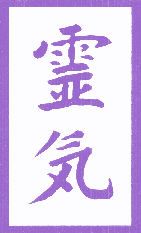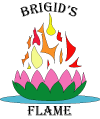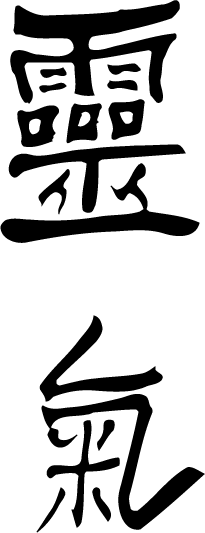
LEVELS OF KI ENERGY
In the book The Spirit of Reiki, Walter Lubeck discusses Japanese ki in one of the book's articles. Ki, is considered to be the equivalent of the Chinese Chi/Qi (as practiced in Tai Chi and Qi Gong and dealt with in traditional Chinese medicine) and the East Indian philosophical concept of Prana. While this comparison is not particularly surprising to those already familiar with the topic of life energy, what was interesting to me was the different levels of ki Lubeck outlined in his article. Lubeck, of course, did not come up with this classification of ki, but came across it through his studies in what he calls "traditional Asian healing arts" and macrobiotics (as founded by George Ohsawa).
There are 7 levels of ki energy - kekki, shioke, mizuke, kuki, denki, jiki, and reiki (from highest to lowest levels). There is also an additional form of ki called shinki.1 Shinki is apparently the combination of all the other levels of ki. It is the beginning and ending of energy. Lubeck calls it the "divine ki, from which everything is created and to which everything returns after the end". Shinki works outside of our world in the spirit world. Each level of ki works differently. The higher forms have more power but less ability to organize the energy flow in the mind and body. The lowest form, reiki, has the best ability to organize the flow of energy (and this is likely the reason why we can use reiki for healing, perhaps it is also because WE as humans collectively are not yet capable of using the higher energy levels). Characteristics of each level of ki is described below.
Kekki
Kekki provides the body with "nourishing strength" and means "ki of the blood". It is used by the body's cells in order to maintain its substance and have energy. Kekki is the least structured energy in the body. It is the nourishing energy, the vital force, needed to create. It is the essence of our being.
Shioke
Shioke provides the body with the structure in which kekki can work and means "ki of the salt/minerals". It helps hold together and uses will to achieve its purpose. It is the human force field. It represents the constitution of human beings, our possibilities of self-realization, and our boundaries. It is the vessel in which kekki is stored
Mizuke
Mizuke allows relationships to function as the basis of communication and means "ki of the waters". Mizuke is emotional energy, including sexual energy. It supports the metabolism and allows us to take in nourishment in many forms. It is energy that allows the structure of shioke to move beyond. In other terms, Mizuke is the force where shioke is the form.
Kuki
Kuki energy sets the boundaries and restrictions and means "ki of air". It is self-fulfillment and helps us shape our lives and our goals. It provides the ability to think logically and provides motivation to follow our own path. At the same time, it makes sure we do not divert from our path or become misguided by others. It also allows us to harmonize with those around us, especially those we are close to. It is, in other words, our true will.2
Denki
Denki manages our relationship with the ego and means "ki of thunder". It allows us to grow while being considerate of others. It provides us with an ethical and moral basis in which to guide our actions. It shows us the proper attitude for each individual situation. Denki creates a natural fairness in exchange with others and tolerance.
Jiki
Jiki provides us with our complementary or shadow self and means "gathering force or magnetic power". Jiki allows us to develop our skills and talents regardless of whatever else we undertake. It forces us to pay attention to what we need to develop and provides the structure for it. Jiki represents the power of aesthetics, art and beauty in any form.
Reiki
Reiki organizes the correct synergetic application of the other forms of ki in the body. Reiki in this system means "soul force or spiritual power". It is the energy in the body that is closest to the "divine creative force". It provides the source of all life. It helps attune, cleanse, and balance. Reiki promotes all life processes. Reiki is the means by which shinki can work in the body.
FOOTNOTES
1. Lubeck does not make it clear why shinki is mentioned separate from his list of 7 levels of ki - perhaps it is because shinki works outside the body. It seems to me that shinki might be ki itself and not a form of ki. However, some websites mention shinki as form of ki. Further research on this is recommended and will be undertaken by myself in the future.
2. Please note that there is a difference between true will and free will. In my own understanding and interpretation of free will, there does not seem to be any boundaries to free will nor any means of conflict resolution. My personal interprestation of true will corresponds with kuki energy as described above. As described it seems that kuki energy has a built-in mechanism for conflict resolution through the boundaries it sets.
LIST OF SOURCES
The Spirit of Reiki: The Complete Handbook of the Reiki System by Walter Lubeck, Frank Arjava Petter, William Lee Rand
Copyright C.J. Chow January 2005

